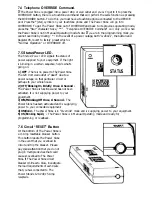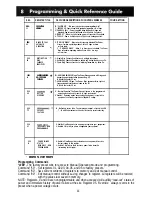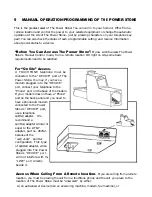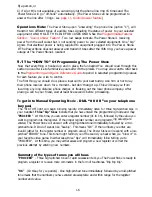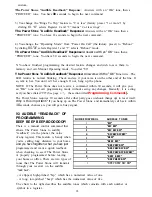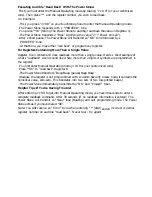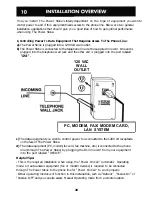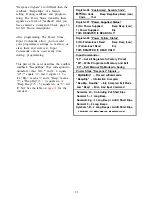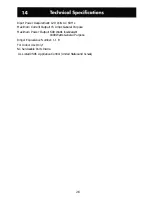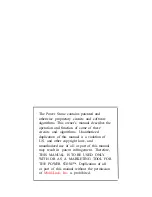
B) a person, or
C) if A) or B) is not available, you can simply let the phone line ring 15 times and The
Power Stone will go “off-hook” automatically. (The Power Stone can be programmed to
answer the line after 3 rings - see
page 11, Audio/Answer feature.
)
Operations Note:
The Power Stone, upon “answering” the phone line (option “C”), will
transmit two different types of audible tones signalling the status of power to your selected
equipment AND HOLD THE LINE FOR 10 SECONDS. See the
Programmable Features
Section - “Audio/Answer Feature”
. Two low beeps indicate The Power Stone is receiving
power from the wall socket but is not sending power to your selected equipment. One “bip”
signals that electrical power is being supplied to equipment plugged into The Power Stone.
If The Power Stone does not answer and transmit tones after the 15th ring- you have a power
outage at The Power Stone’s location!
9.1
The “HOW TO” Of Programming The Power Stone
Now that everything is hooked up and in place, the fun begins! You should read through this
section once or twice to familiarize yourself with the process. You may also want to refer back
to the
Programming and Quick Reference Guide
to pencil in selected programming values
for each feature you wish to control.
The first thing you should do is place a local call to your best buddy. Ask him or her to lay
their phone receiver down for a moment... but don’t hang it up. This will keep you from
incurring any long distance phone charges or freaking out the local phone company. After
placing a call to your friend, wait at least five seconds before proceeding.
To get into Manual Operating Mode - DIAL “# # 8 8” on your telephone
key pad.
The “STATUS” light will begin blinking rapidly. Immediately listen for three high-pitched bips in
your handset.
Three “bip” tones
indicate that you have entered the programming mode and may
“PROCEED”
. At this time, you can enter a register number (01 to 06), followed by the value you
want to program into the register. If the proper register number and programm ing value(s) are
entered, The Power Stone will answer with a high-pitched tone immediately followed by a mid-
pitched tone. It kind of sounds like “bee-bip”. This means “OK”. If the numbers you enter are
invalid (either for the register number or program value), The Power Stone will respond with a low-
pitched “ERROR” tone. This tone might remind you of the sound you hear when you “blow it” on
your favorite video game. In either case, three “bips” will immediately follow telling you to
“PROCEED”. At this time, you may either access and program a new register or correct the
previous attempt by entering new numbers.
Summary of the types of tunes you will hear.
“PROCEED”
- Three high-pitched tones in rapid succession te11 you The Power Stone is ready to
program a register or receive more commands in the form of touchtones. “Bip Bip Bip”.
“OK”
- (Or Okay for you purists) - One high-pitched tone immediately followed by a mid-pitched
tone means that the numbers you have entered are acceptable and within range for the register
number and value.
16












